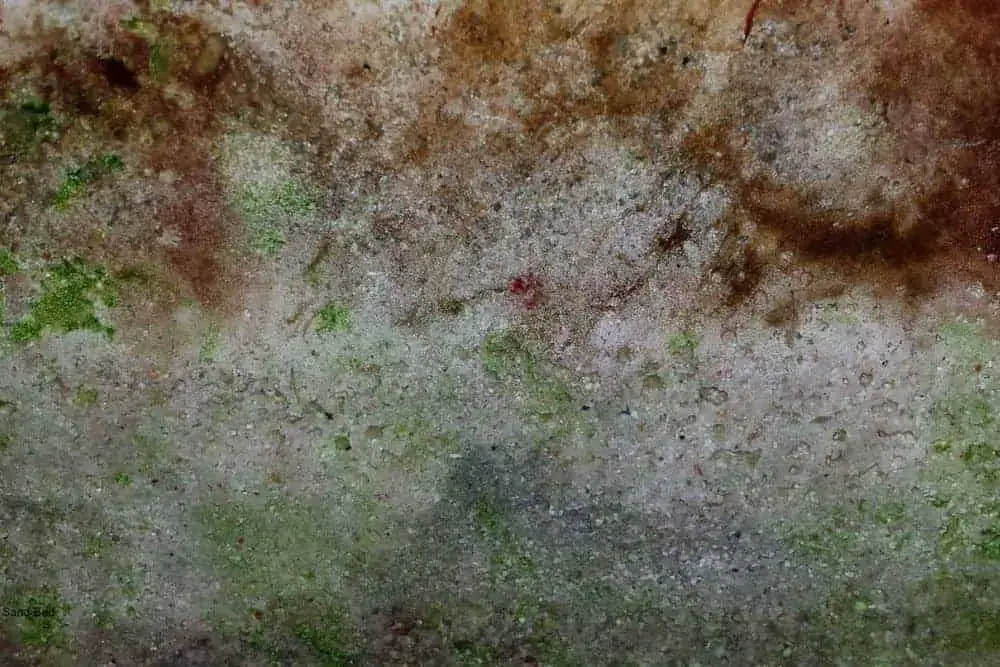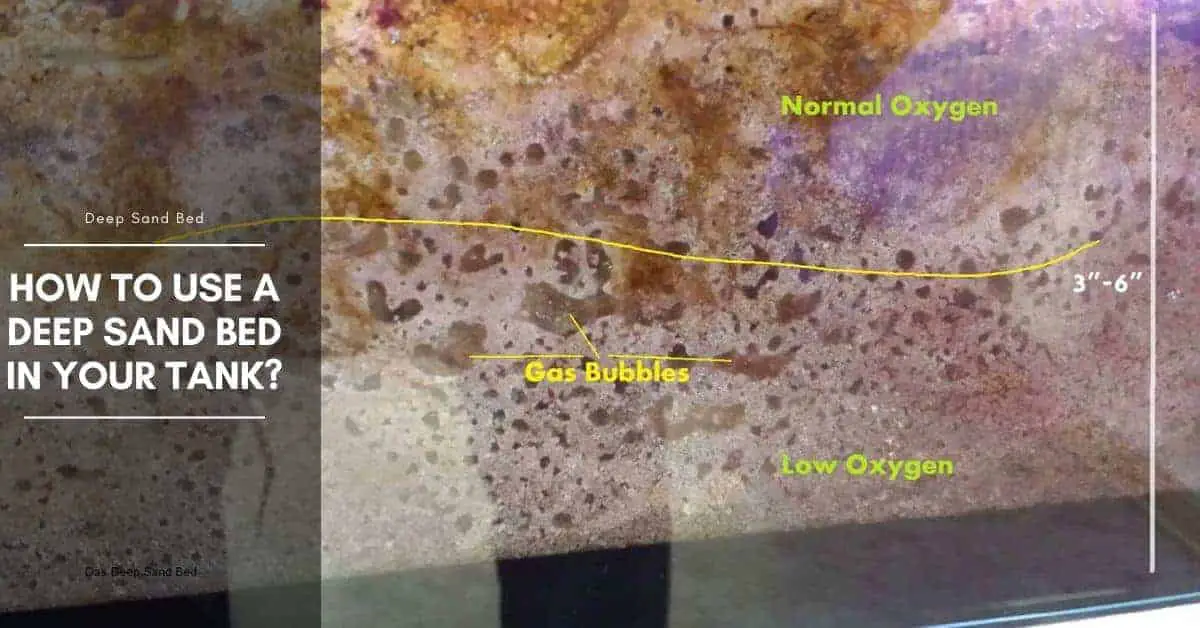Live sand is coral sand or fine gravel of various particle sizes that have been colonized by nitrifying bacteria and usually also by tiny organisms that live in benthic substrates and process the sand and wastes to provide complete biological filtration. Deep sand bed typically used in conjunction with live rock in saltwater aquariums, but it presents a large surface area and can be relied upon as the primary biological filter medium in a marine aquarium.
True live sand has been collected from tropical waters near coral reefs and will bring with it beneficial bacteria and many types of “infauna” – animals that live, eat, breathe, and reproduce in the protective world of wet sand. These include many different worms, crustaceans, mollusks, burrowing echinoderms (sea stars and sea cucumbers), and others. Many are detritivores, eating uneaten food, feces, and other waste material. All serve to keep the sand bed stirred and active, and without them, a sand bed will be less effective as a biological filter.
Cultured live sand is now also commonly available in shelf-stable packaging, and has been inoculated with desirable forms of bacteria to help support biological filtration. It will usually lack any infauna, and you will want to mix in some portions of wild-collected live sand and/or detritivore kits from various suppliers that offer cultures of small, desirable sand-dwelling invertebrates.
Any sand or particle substrate becomes “live” after weeks or months in an aquarium with fish and/or invertebrates. However, if tiny sand-dwelling organisms are desired, they must be acquired and added to the sand.
Tetra AquaSafe Plus, 8.45 Ounces, aquarium Water Conditioner And Dechlorinator, Model Number: 46798162681
15% OffAPI TAP WATER CONDITIONER Aquarium Water Conditioner 16-Ounce Bottle
(as of July 16, 2024 07:23 GMT +03:00 - More infoProduct prices and availability are accurate as of the date/time indicated and are subject to change. Any price and availability information displayed on [relevant Amazon Site(s), as applicable] at the time of purchase will apply to the purchase of this product.)API STRESS COAT Aquarium Water Conditioner 4-Ounce Bottle (85B)
40% OffCuring live sand
- Unless it arrives smelling foul, live sand should be rinsed in saltwater to remove any organic matter that may foul the water in the aquarium. To rinse, half-fill a bucket with warm saltwater and pour the live sand in. Swirl by hand and pour off any cloudy water, which should be discarded.
- To avoid clouding the aquarium water, place the sand in a plastic bag, lower it to the bottom of the aquarium, and pour it out slowly and gently. Spread and stir lightly into the surface layer of the substrate.
- If the sand has off odors or black patches or seems suspect, put it in an auxiliary aquarium or clean container with saltwater and provide some sort of water motion with an airstone or a small powerhead.
- Remove any dead matter that might be contributing to the putrefaction. Keep the water warm and stir the sand bed daily.
- Using a small power filter or skimmer will help speed the process. Do a 50% water change every couple of days until the sand smells clean and there is no obvious decay.
Deep sand bed (DSB)

How does a deep sand bed work?
Deep sand beds are 3-6-inch deep sand beds without air lifts or filter plates on the bottoms of aquariums. Water is not forced through the beds, as with undergravel filters, but natural sand-dwelling organisms are present, and both aerobic and anaerobic biological filtration occurs in the bed. The most nitrifying activity takes place in the top one inch of the sand bed, while denitrification happens in the deeper substrate.
The key to success with deep sand beds is the use of material mostly composed of fine or very fine particles. These are sold in the aquarium trade as “sugar-fine” or “oolitic” sands, with diameters of .2 to 1.0 mm. The tiny organisms that keep a deep sand bed active are best suited to moving in the watery space between tiny particles in the range of. 1 mm in diameter. They won’t establish themselves in beds of coarse sand or in crushed coral gravel, which presents too many sharp edges and impediments to their movement.
Plenum
Deep sand beds can be created with or without plenums. A plenum is an open water space about an inch or two high that is established under the sand bed and has no direct interaction with aquarium water. The function of the plenum is to enhance the anaerobic function of the deep sand bed. In most installations, the prevailing opinion is that any enhancement of function, if it does occur, is negligible, but also that there is no discernible negative effect from the presence of the plenum.
Deep sand bed organisms
Natural populations of sand-dwelling organisms work the sand and keep it functioning. Organic material that falls to the surface is attacked by organisms that live in the top layers of the sand bed, and eventually the products from this aerobic digestion move into the lower layers, where anaerobic bacterial action eventually transforms much of it into nitrogen gas. Thus, a deep sand bed can perform both nitrification and denitrification, but it is very important that strong circulation of aquarium water, 10 to 20 times the entire volume of the tank per hour, over the surface of the bed be present for this filtration technique to work properly.
Detritivore kit for deep sand bed
The function of any sand bed can be enhanced by the presence of bottom-dwelling detritivores, including amphipods, copepods, miniature starfish and brittle stars, bristle worms, and small grazing snails such as Stomatella varia. Collections of such organisms are sold by a number of suppliers, usually marketed as “detritivore kits.” Some reef aquarists add a fresh kit every 6 to 12 months to keep the detrivore populations at full strength.
In summary
While a deep sand bed is an interesting option, a good aquarist can set up a successful large or small reef tank using only live rock with a thin layer of coral sand, a modest sump tank, a good protein skimmer, and excellent lighting. There must be strong water flow throughout the tank, and the live rock must be loosely stacked to allow the free flow of water around and between the rocks. Strong lighting powers photosynthesis and the live rock provides biological filtration. A balance is established between plant and animal life forms, and the tank survives very well.

Hi, my name is Sean, and I’m the primary writer on the site. I’m blogging mostly about freshwater and saltwater aquariums, fish, invertebrates, and plants. I’m experienced in the fishkeeping hobby for many years. Over the years I have kept many tanks, and have recently begun getting more serious in wanting to become a professional aquarist. All my knowledge comes from experience and reading forums and a lot of informative sites. In pursuit of becoming a professional, I also want to inspire as many people as I can to pick up this hobby and keep the public interest growing.
Read more about Sean.
Please join also my Facebook group.



















